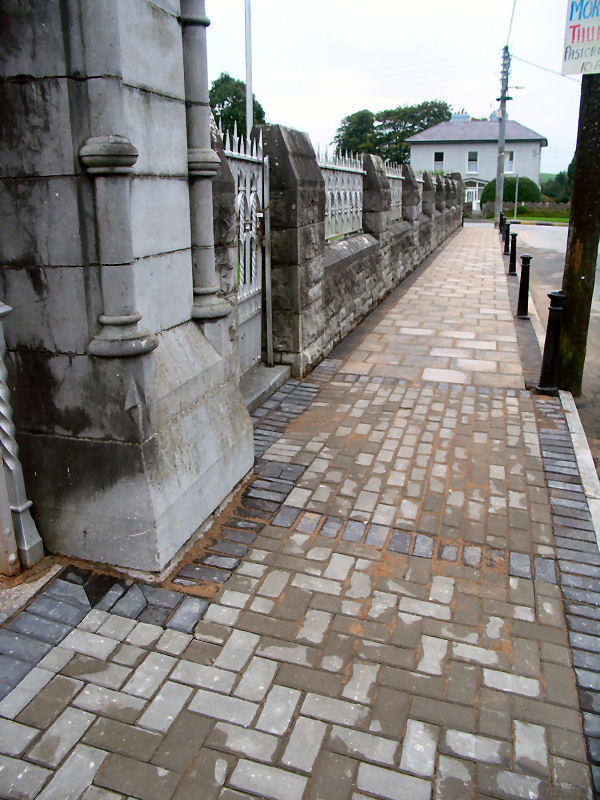Posted: Fri Sep 20, 2013 11:19 pm
Right ok. I'm trying to determine what the best course of action is in wet conditions, contractor to contractors I want to find out the best method and talk about what I actually do and what do you boys do?
So when the weather is nice I.e dry blocks AND joints I typically kiln the job up and then wack it, typically 3 to 6 passes.
However I recently was looking on the site and noted that it's better to actually wack without the kiln, I'm struggling to determine though what the process is and I wonder if it can help me when it's wet.
Rain causes us all problems but the biggest is when I need to wack the job, I've tried covering jobs but inevitably the water some how get under the tarps and will drench an area, turning the screed to slop making life hard, sometimes meaning bits need ripping up before I'm finished. It would be easier if I could wack when wet then go back to kiln, which surely would mean no sloppy sand to wack onto.
So I see the wack first method. Would this mean I could compact the job in the wet (as long as screed isn't sloppy) then just leave it until it's dry, go back and then kiln it? Or is it meant to mean wack with no sand then kiln then wack again?
Last two jobs I've compacted 6 times with no kiln apart from round the cuts to keep them still, it's gone down great and then I've just swept kiln in after- how do we feel about that? They are compacted to refusal and not going down any more. Blocks are nice and tight and pass my kick a corner down hard test ( no movement)
I have wacked dry paving before but joints have been damp with kiln first and the kiln just doesn't go in properly, once the joints are wet it just never seems to dry properly, blocks don't pass my kick test, I then hose in the kiln, then go back and re top up when dry, problem is that takes a lot lot more work doing it that way, unless I leave the job with a slurry of Kiln over it which I just can't do.
So how do you boys deal with wet joints/ blocks?
So when the weather is nice I.e dry blocks AND joints I typically kiln the job up and then wack it, typically 3 to 6 passes.
However I recently was looking on the site and noted that it's better to actually wack without the kiln, I'm struggling to determine though what the process is and I wonder if it can help me when it's wet.
Rain causes us all problems but the biggest is when I need to wack the job, I've tried covering jobs but inevitably the water some how get under the tarps and will drench an area, turning the screed to slop making life hard, sometimes meaning bits need ripping up before I'm finished. It would be easier if I could wack when wet then go back to kiln, which surely would mean no sloppy sand to wack onto.
So I see the wack first method. Would this mean I could compact the job in the wet (as long as screed isn't sloppy) then just leave it until it's dry, go back and then kiln it? Or is it meant to mean wack with no sand then kiln then wack again?
Last two jobs I've compacted 6 times with no kiln apart from round the cuts to keep them still, it's gone down great and then I've just swept kiln in after- how do we feel about that? They are compacted to refusal and not going down any more. Blocks are nice and tight and pass my kick a corner down hard test ( no movement)
I have wacked dry paving before but joints have been damp with kiln first and the kiln just doesn't go in properly, once the joints are wet it just never seems to dry properly, blocks don't pass my kick test, I then hose in the kiln, then go back and re top up when dry, problem is that takes a lot lot more work doing it that way, unless I leave the job with a slurry of Kiln over it which I just can't do.
So how do you boys deal with wet joints/ blocks?
